Even though credit-by-exams programs like TECEP®, CLEP and DSST have been around for years, students still have many misconceptions about them. All I have to do is read the textbook and I’ll pass the test, they say. I already know everything about the subject so I don’t have to study, they claim.
But for most students, these statements couldn’t be further from the truth. Just like any other test, credit-by-exam programs require preparation, including a study plan to familiarize yourself with the format, timing and possible essay requirements. So if you’ve already registered or ever plan to take an exam for credit and think it will be easy, then consider these seven busted myths a reality check.
Myth #1: I can prepare myself for my test in one week.
Reality: Properly learning all the material of a 12-week course in less than one week is practically impossible for most people. There are textbooks to read, study guides to review and study aides to locate (and yes, you may need audio files, videos and computer software to study). You’ll also want to prepare for your exam by answering sample questions, and, if your exam requires an essay, spend additional preparation time reviewing those resources. A consistent study schedule will allow you to retain more information for a longer period of time and avoid a panicked cramming session the night before the test.
Myth #2: I only need to read the textbook, and I’m good to go.
Reality: A related course’s textbook is a good place to start, but you will likely need other materials to effectively study for your test. These tests are equivalent to comprehensive, end-of-course exams, and not developed to reflect the content of one specific textbook. Start by reviewing the test description for that exam, which includes a list of topics, suggested study materials, information about the test format and sample test questions. Additional study resources might involve taking open courses, watching educational videos, reading lecture notes and more. Only then can you know what to expect and how to prepare.
Myth #3: I don’t have to study; my background and experience proves I know it all.
Reality: While the credit-by-exam approach is testing you on knowledge already acquired through work experience or volunteer activities, there may be additional topics you didn’t know or have slipped your mind. To pass your exam, you may need more than experience and application-based knowledge; you will need to understand the theories, concepts and ideas behind the subject. Most importantly, if you don’t remember when you last took an actual test, then it is time to brush up on your test-taking skills.
Myth #4: Once I review the topic, I can cross it off my study guide and move on to the next one.
Reality: Taking this approach to studying may seem like the most logical choice, but in fact, may actually hurt how well you retain the information. Tests randomize the order of the questions reflected in your course guides and content, so jump around and study out of order. Learning the material in a sequence will impact your ability to recall the information when you take the test. Do not expect to remember the material well after only a single reading either; go over the material several times.
Myth #5: I’ll get credit for whatever exams I take and pass.
Reality: While Thomas Edison State University offers enables students to use credit-by-exam to meet many degree requirements, it is still best to check with your academic advisor before registering for a test. This will ensure you avoid taking and paying for an test that does not fit your degree, and you will want to find out about the credit awarding policy in advance so you can get the credits you deserve. You should also speak to your advisor to determine if an exam applies to your degree program, or if you have already taken and earned credit for a comparable course.
Myth #6: I don’t have to work that hard as if I was in a real course – it’s just a test, there aren’t any assignments or anything I have to worry about.
Reality: Whether you are taking a course or considering an exam, both credit earning options require you to be both self-motivated and disciplined to pass. Since these tests do not offer the additional insight and engaging discussions you would commonly have with your peers and mentors in an online course, preparation and learning solely relies on you as the student and teacher. Discipline and self-direction are two crucial skills you will need to develop – and quickly – to succeed.
Myth #7: Credit-by-exams seem way too hard; I’m not going to bother.
Reality: Exams for credit are one of the most effective ways to earn credit for your prior learning; they help you accelerate the path to degree completion and save you the time and money of sitting through a course. While gathering all the test prep guides and resources to study may seem daunting at first, remember that you can focus on the material you need to learn in the manner that works best for you. If you are a visual learner, there are webinars and videos to help you understand the topics, or you can take the numerous practice tests available online to find out where you need to focus on for improvement.
What common credit-by-exam myths have you heard or experienced? Share them in the comments below!

Written by Thomas Edison State University
